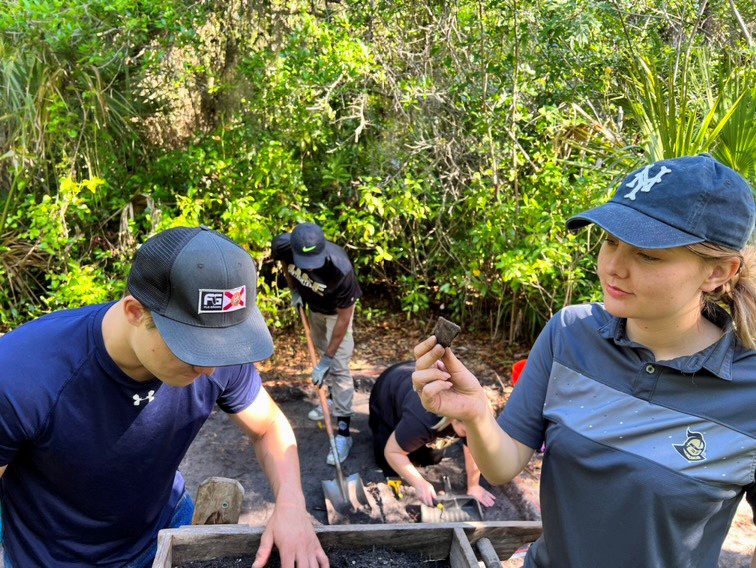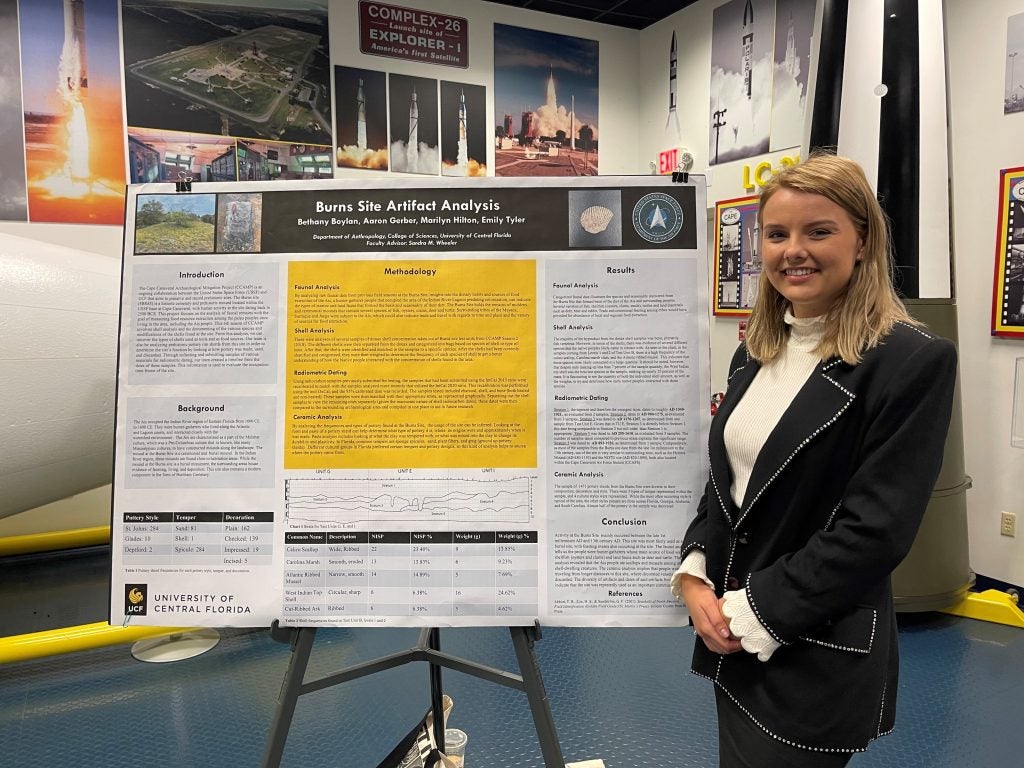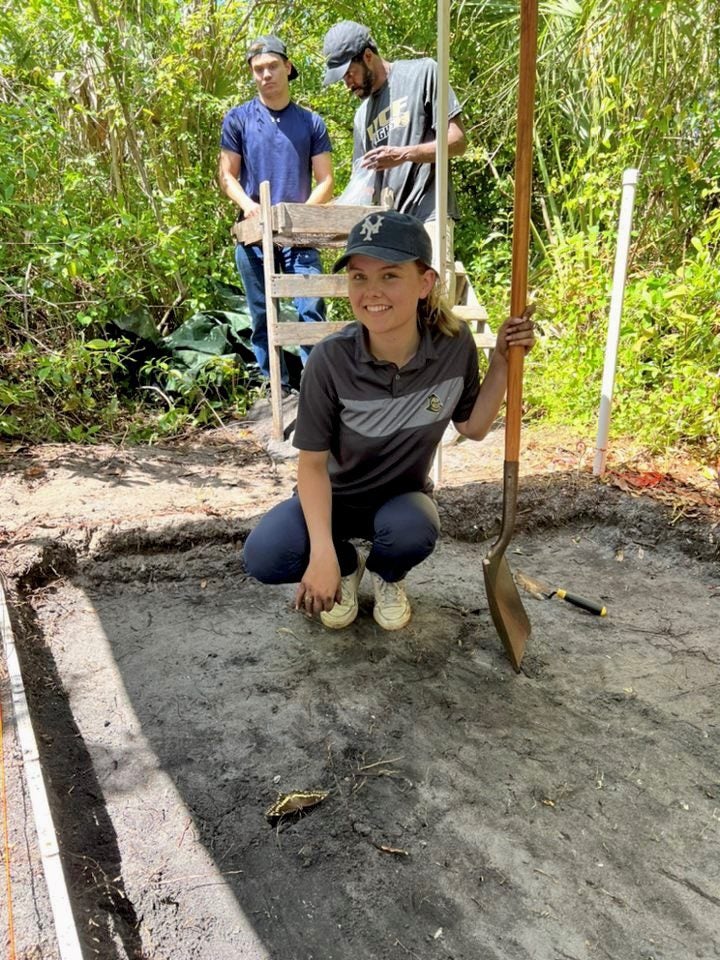Stories from Ancient Pottery Uncovered by Anthropology MA Student

Anthropology MA student Emily Tyler has invested significant time in her thesis studying pottery from the Burns Site in Cape Canaveral, Florida.
Professor Sarah Barber, Ph.D. shared, “Emily has had the opportunity to learn a wide range of analytical techniques as part of her research, which will be valuable to her as she moves forward in her career. This project has enabled Emily to develop breadth and depth in her skill set that will be invaluable both in future scholarship and as a professional archaeologist.”
Here’s what Tyler had to share about her experience so far.
Please describe your research project.

My thesis research involves compositional analysis of pottery from the Burns Site in Cape Canaveral, Florida. Pottery can help us answer questions about site occupation and use. My research questions are as follows:
What was the nature of the occupation and use of the Burns Site? Where did the pottery deposited at the Burns site come from?
This site was occupied during the Malabar II period, which spans from 750 CE- to 1565 CE. The Burns site includes a burial mound and midden area, which is a high concentration of organic material and refuse. It is located along the Banana River in the Indian River Lagoon Region, and the site shows signs of large feasting activities.

For my thesis, I selected a sample of pottery for Instrumental Neutron Activation Analysis (NAA), which was sent off to the nuclear reactor at the University of Missouri (MURR). Using these results, pottery is clustered into compositional groups, which can be compared to other pottery samples and clay samples around Florida to determine where the pottery was sourced from. I am also using statistical clustering to analyze the type, form and size of the pottery found at the Burns site. When compared to the chemical composition clusters, I hope to see some overlap of clusters with the type/form clusters. This may mean that certain geographic areas were providing specific types and forms of pottery to the Burns site.
What was the most challenging part of your research project?
The most challenging part of my research project was learning new methods of analyzing my data. This semester I am taking a course using the coding Language “R” to conduct statistical analysis. I never thought that I would be learning coding in graduate school, but here I am!
What has been the most interesting thing you have learned?
The most interesting part of my research was finding an unusually high percentage of decorated pottery sherds in contrast to nearby sites (in archaeology, pieces of pottery are referred to as “sherds”, not “shards”). Decorations include linear incision patterns, stamped patterns and other decoration techniques.
What are your career goals after graduation?
After graduation, I hope to continue working in archaeology. I will be applying to Ph.D. programs this semester to continue my research.
